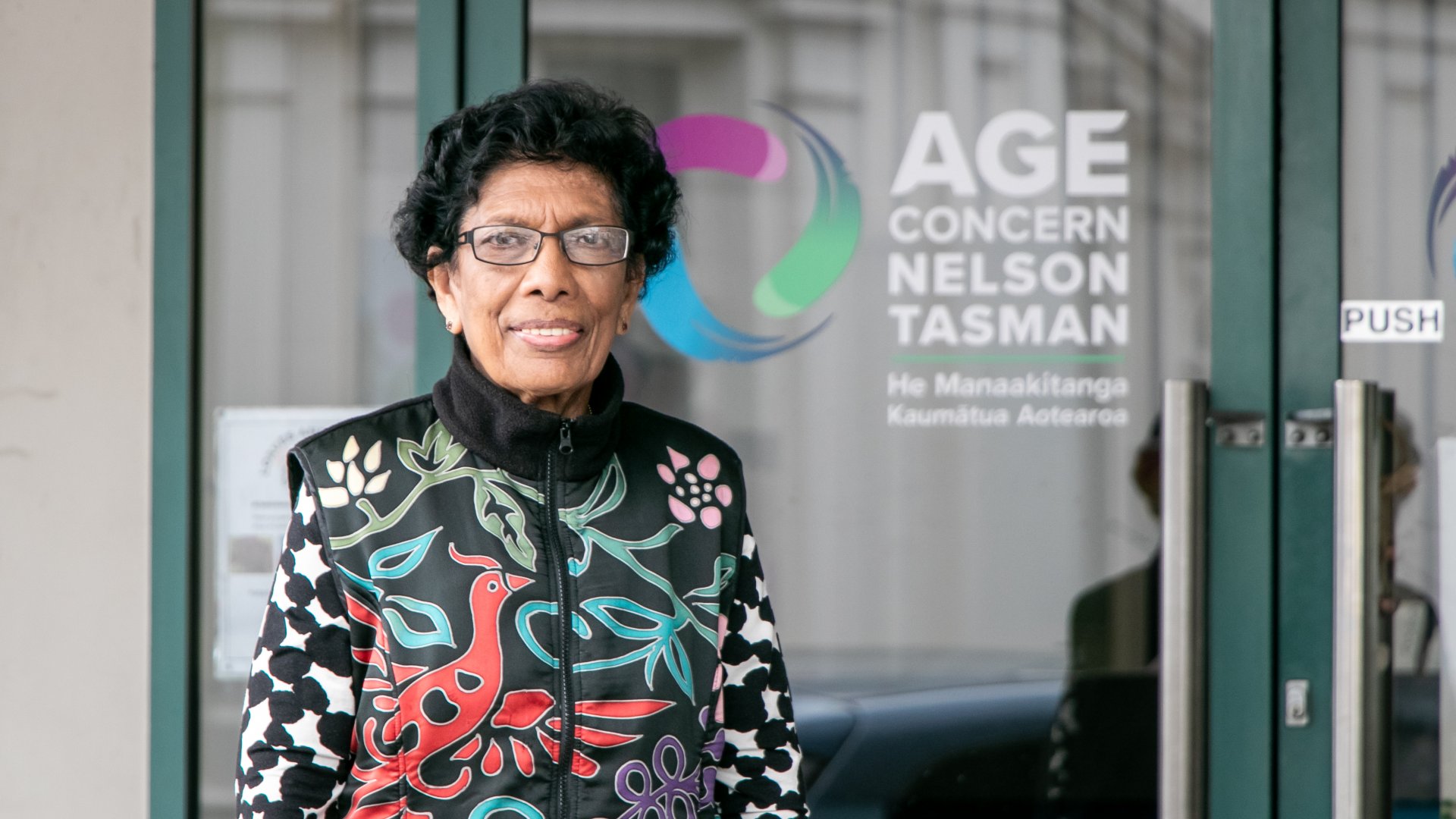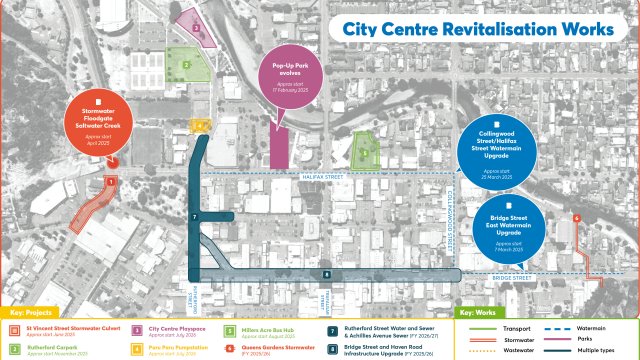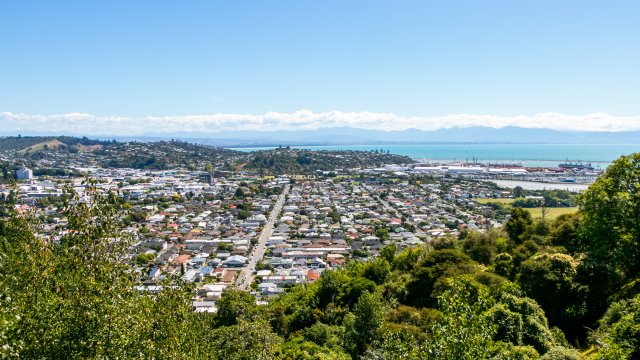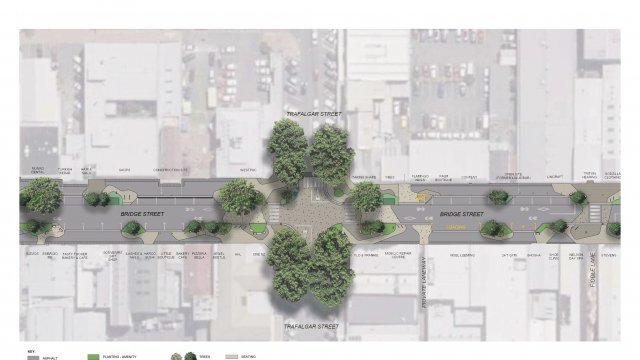A better city for all ages?
10/11/2023 1:02am
Revitalising the inner city through the Bridge to Better project has the potential to make Nelson a more socially connected and vibrant place across all generations.
Age Concern Nelson Tasman’s manager Caroline Budge is passionate about making Nelson a great place to age, and with the Age Concern Nelson office on Bridge Street, Caroline has a keen interest in the Bridge to Better project.
“I was on the steering group for the City for All Ages strategy, and I really hope that all the great ideas that came out of that work will be incorporated into the plans for Bridge Street.”
“I’m interested in how any changes on Bridge Street will help make the inner city a safer and more lively place for everyone, including older people. Making the inner city more age-friendly, for example, by providing more seating, and wider and smoother footpaths, actually makes it better for everyone – whether it is a parent with a pram, a young person on crutches due to a sports injury, or a member of our disabled community.”
She also points out that you can’t put all people over 65 in the same basket.
“Over 65 can include more than one generation, and the needs of an active 68-year-old are quite different from a 95-year-old who may require more support.”
Caroline is inspired by the American researcher Dan Buettner who has travelled around the world to gain insights into communities where older people thrive, areas he calls ‘Blue Zones’.
Dan Buettner believes that staying healthy is a group effort and we all need to support each other.
One way Caroline believes people can support the wider community is by changing perceptions around convenient parking.
“We often hear that people are worried about on-street parking being reduced, but with our large parking spaces like Montgomery and Buxton Squares, there is actually loads of parking close to Bridge Street. It would be great if those who are capable of parking and walking short distances do so, leaving on-street parking available and accessible for those who really need it.”
It’s actually a win-win situation, as many experts say that finding ways to include incidental exercise in your day, like parking further away from your destination, is a great way to stay fit and healthy, she says.
Being active, vibrant and connected is something we all aspire to, no matter what stage we are in life, Caroline says. She’ll be working to make sure that a range of older adults have their say about the future of Bridge Street to make a more positive city centre for everyone.
Shirley, in her early 80s and Pete, in his late 6os, are both regular visitors to the inner city, agree with Caroline that a vibrant inner city is good for everyone, no matter what age you are.
“It’s about having communal spaces for different people with different needs,” says Pete.
Shirley agrees. “You’ve got to cater for everyone – from babes in prams to someone who is 102!”
Pete says building flexibility into how public space is used is a good idea.
“The needs of the community change throughout the year. In the lead-up to Christmas and over summer, the streets are busy and full of people, but other times it’s a lot quieter. So having the streets set up so they could be used in different ways depending on what was happening would be great. It could be as simple as having smaller trees in movable pots instead of large trees planted in the ground.”
For Shirley, coming into the city gives her much-needed social connection – whether it’s chatting to the bus driver, catching up with friends for coffee, or simply people-watching. She wonders if there are ways to encourage even more connection.
“When I’m waiting for the bus, everyone sits next to each other in a row. But if the seats were curved instead of straight, it might encourage people to start a conversation with each other.”
Moving from the UK around seven years ago, Shirley was impressed by what Nelson has to offer. “Nelson’s got almost everything – a library, a museum, the cathedral, theatres, cafes, lovely gardens and beaches. It’s easy to walk around and has a lot going for it. But I think it needs to be used more.”
“It’s not just thinking of the needs of older people, but taking into account how different generations, like grandparents and grandchildren, use the city together,” Shirley says.
“It might seem like a basic thing, but access to public toilets is really important for both young and old.”
The revitalisation of Leeds in the UK is an example of a well-thought out city design, Shirley says.
“They had dedicated carparking buildings at different spots around the city. It was convenient as you could park your car, and then be within walking distance of where you needed to go. There were small play areas dotted around the city, so it was great for the grandchildren.”
Smart road design, including having a clear separation between pedestrians and other traffic – whether its delivery vehicles, cars, scooters or e-bikes is important to Pete.
“The older generation have embraced e-bikes, but sometimes they charge down the lanes and footpaths, and they’re going pretty fast. It can be disconcerting to other people on the street,” Pete says.
Road design extends to the footpath too. “I have balance issues, so I’d prefer to have a smooth asphalt footpath rather than bricks, which can become uneven, or tiles that can be slippery,” Pete says.
Pete is supportive of bringing more life into the city.
“I’m concerned about the impact Nelson Junction is going to have on the central city. There are a lot of empty buildings already, which can be quite depressing when you walk around the city. I know they want to encourage more inner city living, but why would you live in the city when there is nothing much happening. From what I can see, the lifeblood of Nelson is being pulled towards Richmond and Tasman,” Pete says.
An art pathway, places where families can picnic and a dedicated area for live music are some of the ideas Pete and Shirley have for any inner city development.
But for both, feeling safe when they are in the city is their biggest priority.
“It would be great to have more green spaces and more communal areas in the city. But they have to be safe for everyone – the young people and the older generation alike,” says Pete.




